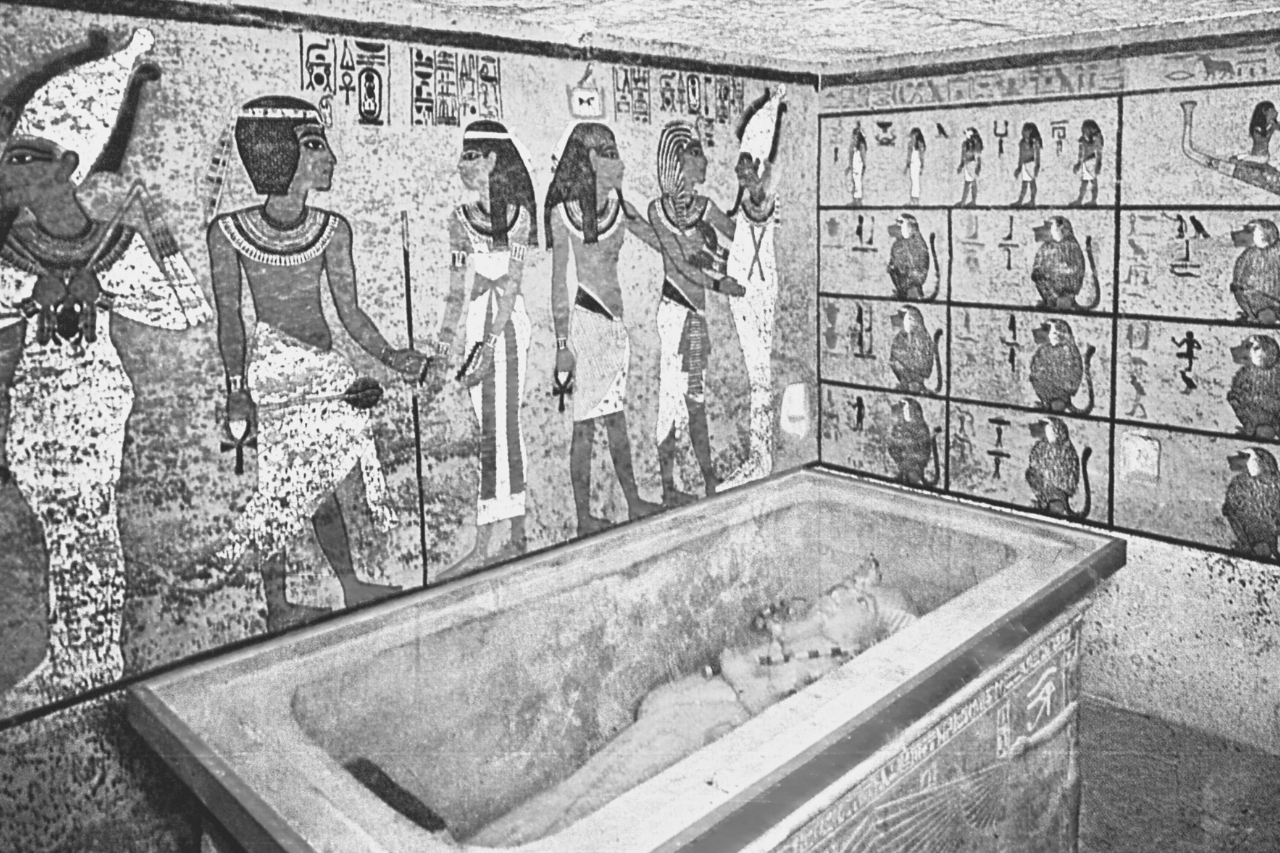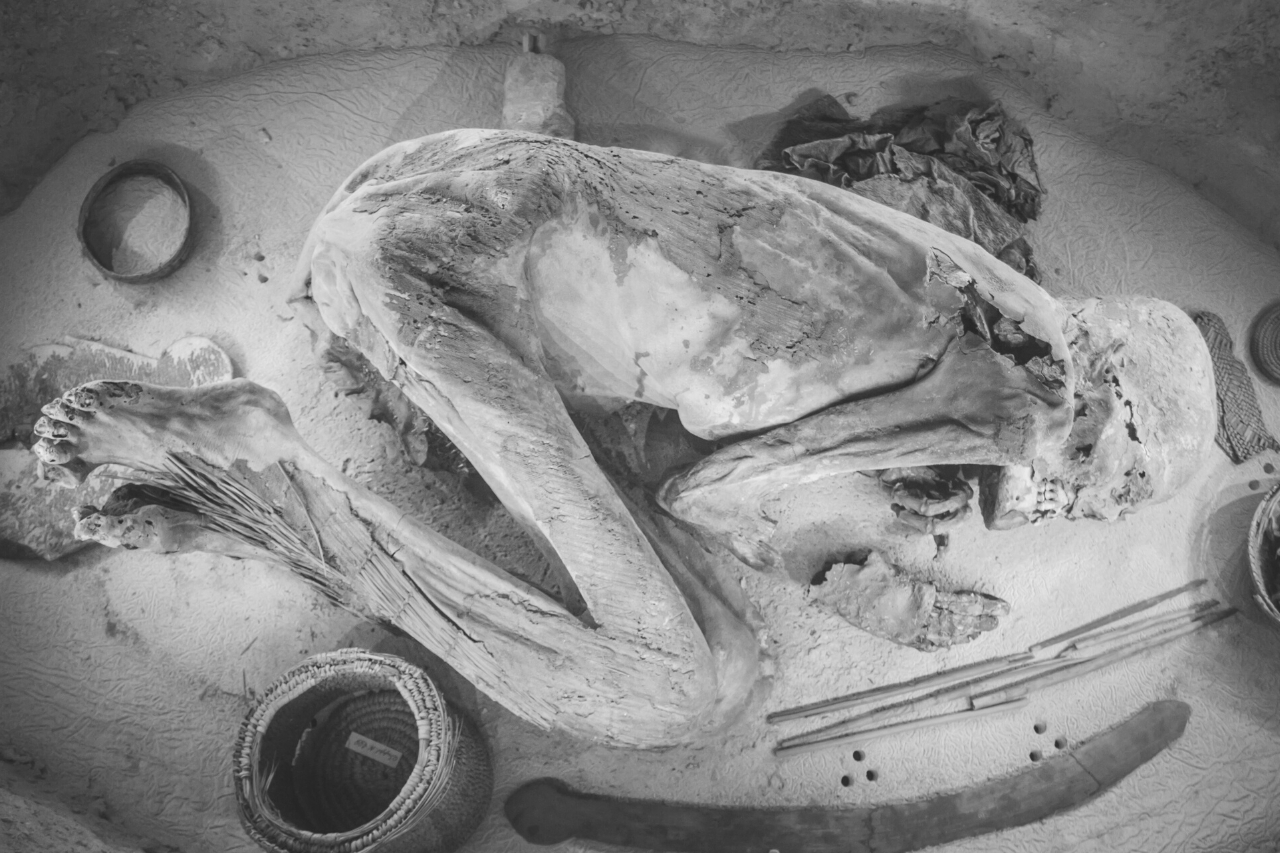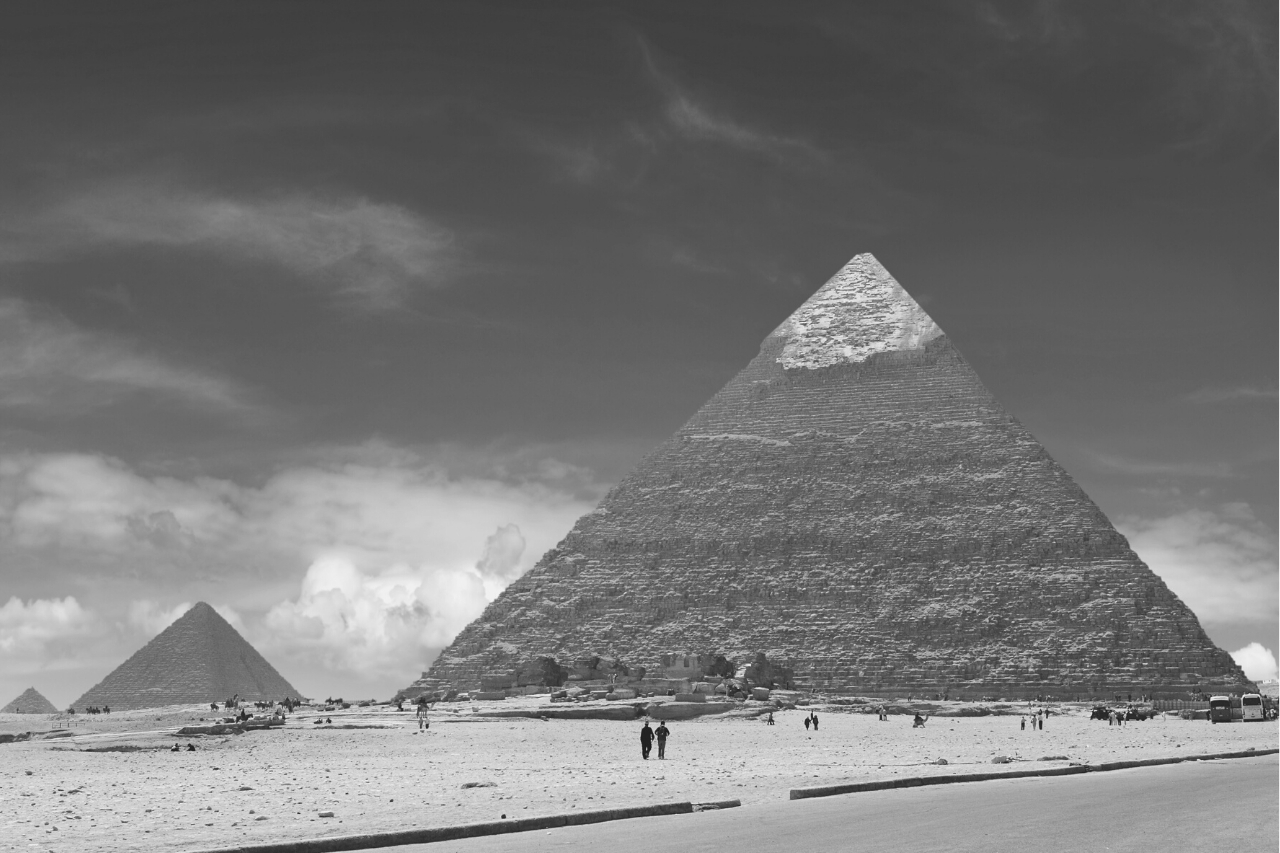Egyptian Burial Practice: The Life After Death
While life was precious for the ancient Egyptians, death required elaborate rituals to complete a ceremonial Egyptian burial practice. Death for the early Egyptians meant a journey to the afterlife, and this journey was composed of complex beliefs to discover what lies in their life after death.
For thousands of years, you have heard that Egyptians had anticipated death as the end of their earthly life and the beginning of their journey to an everlasting world.
To enter the afterlife, ancient Egyptians had to undergo a transitional time that needed loads of strict preparations, including the proper preservation of the dead body to ensure that there is life beyond this world. Ancient Egyptian burial customs reflected the rich tradition of the people and their everlasting hope for something great after death.
What Were the Ancient Egyptian Burial Practices?
Egyptian burial practices varied depending on the people’s status in the society. This time, you will discover that in the past, early Egyptians had sophisticated and elaborate ways to bury their dead to ensure their passage to the afterlife.
They followed unique practices intended to preserve a dead person’s body and send the dead off on their next voyage, which was believed to be their gate to immortality.
However, do you know that the passage to this gate was tedious and complicated? The soul of the dead person must take and pass a chain of arduous tests, as explained in the Book of the Dead, guided by amulets and prayers.
It’s a real journey for the deceased person, in which the final judgment would be a test with Osiris, the Egyptian god of the dead. In the end, it’s important to see the cleanliness of the dead person’s heart.
The test was done by weighing the dead person’s heart against a feather. To pass the test, you must ensure that the heart is as light as a feather. After passing the test, the soul could proceed to the Field of Reeds, whereas those souls whose hearts were heavier than the feather would be devoured by the monster Ammit (the crocodile-headed Eater of the Dead). This part was the most discouraging of all because the dead soul’s journey would end in shame and eternal damnation.
You must also remind yourself of the Fields of Reeds or A’Aru, where all Egyptians longed to go. For them, it was their glorified vision of one’s life on earth. It is also called Sekhet-A’Aru, which means the great beyond because, for them, death simply refers to a transition into another voyage.
Do you know that everything you have lost on earth can be achieved in the Field of Reeds? It’s the epitome of the ancient Egyptian faith about death, which was developed from the Middle Kingdom (2040–1782 BC).
You should also consider the belief that one’s soul can receive eternal life in A’Aru based on the person’s generosity when he was still alive. While he receives eternal judgment in the Hall of Truth, the soul expects to find eternal peace in paradise.
A major part of the ancient Egyptian death rituals was the practice of burying their dead and the preservation of the deceased’s body through the process called mummification. This is the preservation of the deceased body to enable the soul to cross the gate of the afterlife.
You must know that it was a crucial part of the tradition to guide the soul in the afterlife while keeping the whole body intact. They knew that without the preserved body, it’s impossible for the soul to stay.
The Ancient Tradition of Mummification
The ancient method of preserving a dead body by embalming the flesh is called mummification. It involves a delicate process of drying the body of the deceased by using chemicals or natural methods to embalm the organs and the entire body.
Well trained in this method, Egyptian embalmers practiced mummification to save the body from decay for centuries. You probably know that mummified bodies are preserved even for three thousand years.
Mummification required considerable care and technique that lasted 70 days. Trained priests would cleanse, treat, and wrap the body carefully. Coinciding with long prayers, the priests had to learn about human anatomy to ensure that the procedure was done properly. To guarantee that the body was dried, they had to remove all internal organs, including the brain and intestines, except the heart.
Having done all critical procedures, the priests would then wrap the body carefully, complete with amulets and prayers to guide the deceased person in his journey. You can tell that mummification was done to honor the dead. It’s an artistic ritual that secured the dead body with a strong belief that it could reach its destination well.
Egyptian Burial
After the long process of mummification, the dead body would be buried via another extensive process. This time, craftsmen, workers, and artists would help one another to create a tomb. The tomb should be completed with furniture, jars, food, prayers, and paintings for the funeral.
Another special part of the ritual was the “Opening of the Mouth,” in which the priest would touch certain parts of the mummy with a tool to open the body parts ceremoniously and help the mummy sense joy while traveling toward the afterlife. He would then be placed in a coffin and finally laid in his burial chamber or a tomb.
You could tell that an elaborate ritual was done with the belief that life is a precious phenomenon to be given such honor. They thought that keeping the body intact was the right thing to do to give their last respect for the dead.
They also thought that a mummified body should be protected from evil. It’s an ancient Egyptian custom to preserve the dead body because it’s the home of the soul, and it’s essential to carry out these customs to lead the soul to the afterlife.
Egyptian burial rituals were observed in the Predynastic Period in Egypt (6000–31500 BC) as they believed in the presence of life after death. You have seen that Egyptians were concerned about their attitude toward saving their soul and fear of eternal condemnation. They hoped for eternal life and an everlasting peace beyond death.
Egyptian Burial Customs
The early Egyptians believed in life after death, such that they were conscious of their thoughts and actions. They acknowledged the importance of everlasting life awaiting every soul, and this was a profound belief that started in the Predynastic Period in Egypt (6000–31500 BC).
Interestingly, they thought that the dead lived inside their tombs. Later on, they believed that the good souls were taken to the heavens by Nut, the sky goddess, to become stars. During the Middle Kingdom, the people’s trust in Osiris made them believe in the presence of the underworld known as Duat.
Egyptian Funerals
All people from all walks of life deserved a funeral, whether the deceased was rich or poor. They believed that dead people who were not given a proper burial would return as ghosts to haunt their living relatives.
You might find it gruesome to hear stories of ghosts in ancient Egypt. Hence, to grant them peace, their families would be obliged to give the best funerary rites for the deceased body. Burial customs, which included all the necessary provisions for their journey to the other world, were vital in the past.
Ancient Egyptians’ tombs were as simple as to bury their dead. These were later developed as gigantic pyramids for the pharaoh and his family, and this is also the reason why in later years, the Ancient Egyptian tombs are very ornate and a sight to behold.
A sarcophagus was created as a protection of the corpse. You must remember that the goal of the embalmers was to preserve the body for the next thousands of years; thus, keeping the corpse in a coffin was a must.
Aiming at protecting the corpse, early Egyptians made secured coffins marked with hieroglyphics. All of these were written in the Egyptian Book of the Dead to remind the soul of their relationships and acts when they were still alive, where they were going, and how to cross from this world to the afterlife.
The Egyptians were armed with the Book of the Dead as the most complete instructions on how to guide the soul on their journey to find everlasting life.
The coffins used in the past, particularly in the Old Kingdom, were simply made of wood, but they were carefully designed to match with the deceased bodies. They carried the symbols of the dead person’s life on earth, such as the name of the dead person, offerings, and a compartment for the Ka statues that were believed to be the adoration of the gods even after one’s death.
These coffins were decorated according to the social status of the deceased. So, you could imagine that the members of the royal family owned meticulously painted coffins reflecting their prominence in the society, whereas the poor ones maintained their humble status even in their burial.
Burial Goods
You already know that burial goods were important in the Egyptian funeral. Their very purpose was to protect the deceased and maintain the needs of the soul in the journey. To do this, relatives of the dead person would send items, including combs and bowls, along with the food.
Because they also buried expensive items, such as jewelry and pottery, the relatives were worried about the threat of robbers, which actually happened in many instances. Another burden for the relatives of the deceased was the lack of space inside the tomb due to the various funerary goods sent along with the corpse.
Burials during the early times were filled with ceremonies and rituals. With their strong belief that their prayers, funerary goods, customs, and the guidance of gods and goddesses, the soul can travel in peace.
Funerary Boats
Funerary boats were an integral part of ancient Egyptian funerals because they were thought of as the vehicle used by the gods to travel from the sky down to the underworld.
Evidence of this was a large funerary boat believed to be used during the time of King Khufu in the Old Kingdom. They were basically made of wood with papyrus reeds tied well. Along with this belief was the major part played by the Nile River.
You can imagine that the boat carried the coffin with a dog as a guide to the afterlife. With a length of 20 feet or more, the boat was enough to carry the coffin of the deceased. Again, you could compare that the kings made enormous funerary boats, such as those that were 144 feet long with 12 oars, whereas the poor ones just made smaller boats.
Funerary Texts
Important words and prayers were always connected with the deceased. Ancient Egyptians had been known for their gift of poetry and literature. Therefore, in their coffins, you could see numerous funerary words that contained spells and instructions for the dead.
They were also honored in words, such that a beloved ruler, for example, would always be revered even after death. They even wrote their spells for protection and guidance against evil influences.
The texts were carefully chosen from a large bank of prayers for the overall safety of the soul. Egyptians were believed to ask workers to cry and pray for the dead in exchange for money.
The rich ones also hired writers to compose better work for the nobility. Later on, these prayers were developed as the Book of the Dead, but you know, it was not how long the prayers were but the purpose of the prayers themselves.
Tombs
Ancient Egyptians built tombs for the deceased for protection and complete rest. These were also a place for ceremonial rituals performed by mourners. You can imagine the space needed for their tombs because of the considerable customs to be performed for the deceased.
A typical tomb in the past was composed of two spaces: the chamber for burial where you could see the mummified body in a coffin and another space for funerary objects that they perceived were important for the safe voyage of the soul to eternity.
This chapel-like structure was just a typical tomb, but the kind of burial space for a pharaoh was already a temple for his subjects to mourn and offer prayers. Ordinarily, the tomb of a deceased Egyptian was located near his or her home village. It’s a place that was not so fertile for vegetation. However, for a pharaoh, the tomb must be strategically located in a sacred place.
In Prehistoric Egypt, they had the tradition of burying the dead in deserts. Later on, the small spaces for tombs increased in size according to the economic status of the deceased.
Also, the vast desert was beneficial for the poor because they could not afford the ceremonial rituals typically given for a dead person. To save money, farmers used mudbrick for the tombs of their loved ones.
The Role of Religion in Ancient Egypt
Civilizations in antiquity were generally built based on the people’s faith in someone powerful and eternal. They worshipped their gods and goddesses, deities, protectors, providers, and saviors.
You must understand the role of religion in their everyday life, and it can help you remarkably if you know the religious practices observed by the early Egyptians in the past.
The Egyptians’ religious beliefs were based on their profound faith in gods. They practiced a dynamic belief in eternal life and the afterlife. They felt that the gods were omnipresent and could make or unmake their dreams, such that an honest reverence was a must. By merely reading their stories, you could fathom their deep religious belief, which was already an integral part of their culture.
Their gods associated with death, including Osiris, Anubis, and Nephthys, were particularly invoked for constant protection and guidance. Also, the people had to worship and thank these gods for their safe passage in the afterlife.
Conclusion
Early Egyptians believe in life after death. They observed considerable ceremonies to complete the Egyptian death rituals in preparation for the soul’s journey to eternity.
They were a meticulous set of rituals pertaining to the soul’s departure, and they mostly included food, games, jewelry, personal things, perfume, and prayers to gods guarding the soul of a dead person to the afterlife. With all these ceremonies, you could see how they respected the dead.
Death and burial in ancient Egypt could be among the most crucial times in their culture. Much has been done to protect the corpse, and because they believed that the body should be preserved, mummification was invented. With the elaborate procedures involved in mummification, early embalmers guaranteed the natural drying of the body by using natural preservatives.
Death is inevitable, and one’s soul deserves love, honor, and respect. You might be in awe at the mystifying medical ability of the early Egyptians in preserving the corpse that could stand the test of time. Through the discovery of these mummies, you can tell that they are the only civilization that gives us a glimpse of how people lived thousands of years ago.













